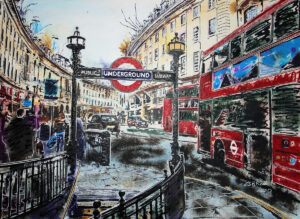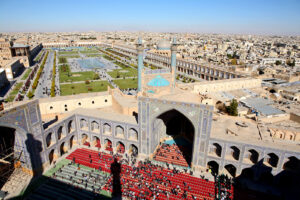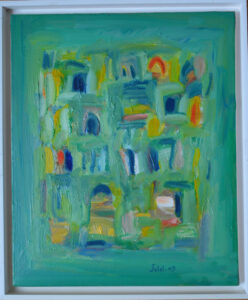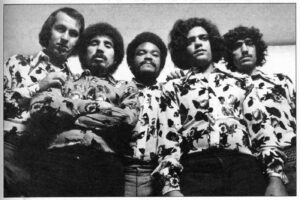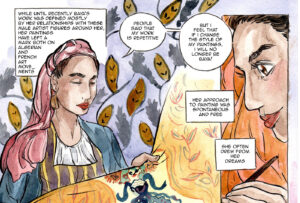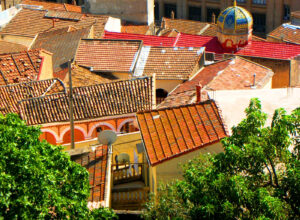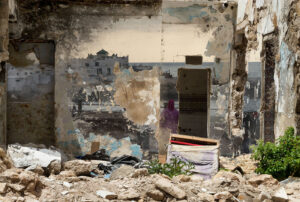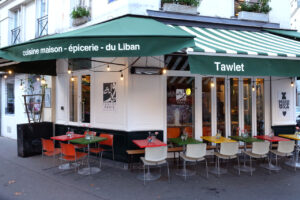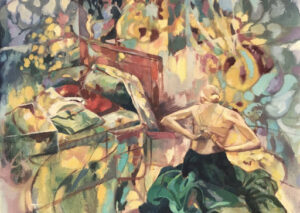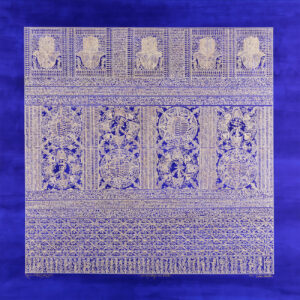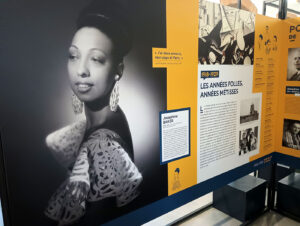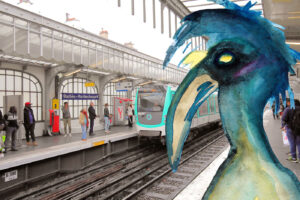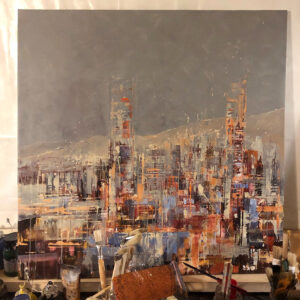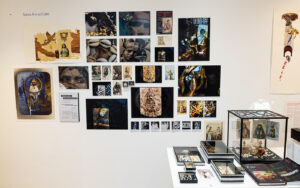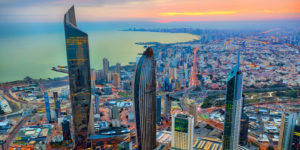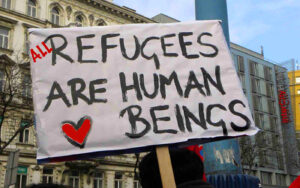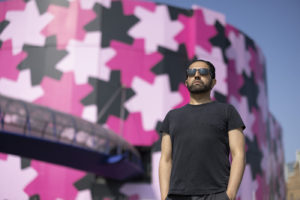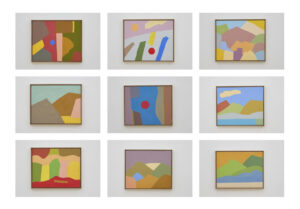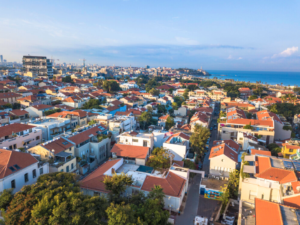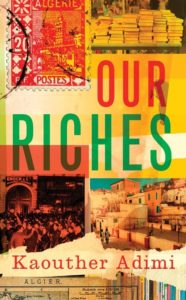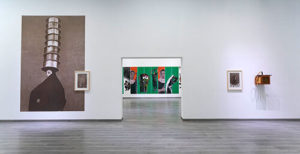Paris as a palimpsest — some of the page may be torn; certain sections may be downright missing. What you do see has been rewritten by generations multiple times over — in different scripts, and in different languages. An exclusive excerpt from Paris Isn’t Dead Yet: Surviving Gentrification in the City of Light (Saqi Books 2024)
Cole Stangler
If you get on the Line 2 Metro at Barbès–Rochechouart, right at the southern edge of the Goutte d’Or, there’s a chance you’ll cross paths with one of its regular passengers at work. He’s short and slender, with a Casio mini-keyboard strung over his shoulder. When he starts playing, the first few notes on the keys may sound unremarkable, like any street musician. But once Mohamed Lamouri starts singing, his otherworldly voice is impossible to ignore. Rough and gravelly — right on the cusp of raspiness — it has a way of drawing you in with its strangeness and poignancy. It’s also capable of a tremendous amount of versatility, moving from the high drama of Algerian raï to a deftly arranged Arabic-language cover of “Billie Jean.”
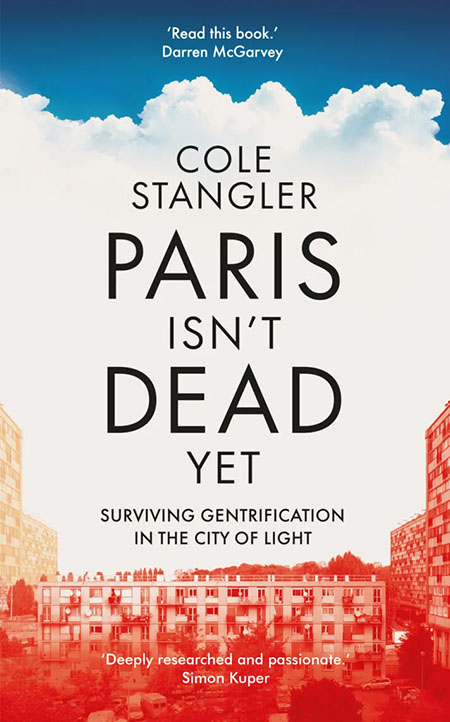
From Barbès, it’s only a ten-minute metro ride east to the neighborhood of Belleville. From the moment one emerges from the metro here, the energy in the air is palpable: young men peddling knockoff cigarettes; giant Chinese letters above a restaurant overlooking the plaza and a French translation in neon lights that reads “LE PRÉSIDENT;” sex workers lining the main boulevard from the early afternoon onward; café terraces filled with patrons of different ages and ethnic backgrounds; more action bustling on a thin street winding its way up a steep hill. Belleville is many things, but one of its distinguishing qualities is that it remains a holdout to the wave of uniformization sweeping through Paris, a neighborhood that has managed to hold on to something that can’t be found elsewhere.
It needn’t be idealized too much. There are all the familiar signs of gentrification — a sleek new organic food store; an expensive wine and liquor store; an art gallery — spaces that invite certain clients and exclude others. The rents are becoming ludicrously high. The divide between those who live in social housing and those who don’t is growing by the year. And yet, certain facets of life in Belleville carry on: a willingness to embrace difference; a streak of rebelliousness; perhaps above all, in certain places and at certain times, a recognition of the fact that multiple populations share this space — that this neighborhood has never belonged to any one group in particular and that therein lies its charm.
One such spot is Le Zorba. It’s technically what’s known as a PMU, a café that doubles as a place to gamble on horse races. (The abbreviation comes from Pari Mutuel Urbain, the company with a monopoly on equestrian bookmaking in France, known for its emblematic green-and-red signs sticking out of cafés nationwide.) In the mornings, the café draws workers making quick stops for coffee breaks: construction crews, bus and subway conductors, sanitation workers. In the afternoons, it’s mostly dominated by the old-timers who come to watch the races. About a dozen men fill the back of the café, their eyes transfixed on the flatscreen TV. But the decor suggests something else happens here, too. A smattering of concert posters covers the wall. A pair of thin, pink neon lights run across the ceiling.
In the evenings — and especially Friday and Saturday nights — Le Zorba is a popular spot for a crew of 20- and 30-somethings who come here to party, dance and get drunk until it closes, like most bars in Paris, at two in the morning. A fourth and final wave of patrons — the most obliterated of all — tends to arrive when Le Zorba opens back up at 5 a.m. It’s one of the few places around to keep the party going.
The Rise of the Immigrant Entrepreneur
The next day, the regulars were back. The music was off. The TV was back on, broadcasting a horse race from the South of France. Nearly all the patrons were on coffee, not beer. At around two in the afternoon, the bar’s manager walked in the door, 42-year-old Ferhat Becheur.
“We have different clienteles,” Ferhat said over espresso on the sunlit terrace, pausing for drags on a cigarette. “The morning, it’s people who work. In the afternoon to early evening, it’s people for the PMU. And then after that, it’s the young people. It’s sort of branché [hip]. I think we’re one of the rare cafés that does this.”
Ferhat has helped run the bar since 2016, taking over the job from his father, who opened Le Zorba in 1990. (Before that the space, which had been around for decades, was known as La Comète.) Many of the regulars — the guys who come for the horses — are from Belleville. Other clients just spend a lot of time in the neighborhood, like the legendary metro singer Mohamed Lamouri, who’s been known to post up inside Le Zorba at night after singing on Line 2. He usually orders a peach or strawberry Diabolo, a non-alcoholic cocktail made of syrup and lemonade. Then he takes the night bus back to his home in the northeastern suburbs.
Becheur said the churn around him is visible: “A lot of my clients have left Paris because of the rent.” He says he knows of a few other café owners nearby who’ve shuttered their doors in recent years — they were either unable to make ends meet or tired of hustling. But he says he’s doing all right.
It seems to me there are profound, perhaps even mystical, ties between Le Zorba and the neighborhood, but when I ask Ferhat about this, he’s much more grounded, much more to the point. “That’s Belleville for you. I like this neighborhood a lot,” he smiled after my overwrought attempt at getting him to muse about where he lives.
“It’s the mix,” he continued. “I feel like I’m at home [in Algeria], but I also feel like I’m in France.”
Ferhat Becheur is perhaps too modest to point it out himself, but he’s also representative of another tradition deeply ingrained in the fabric of the city and Belleville in particular: the success of immigrant entrepreneurs.
People born abroad have long left their marks on Paris, sometimes through the arts, but most often through underappreciated low-wage labor, working behind the scenes to keep the city running and business flowing. They’ve tanned leather, repaired shoes, sewed clothes, refined chemicals, built cars, swept streets, run subways, cleaned dishes and served food. Since they started arriving in more significant numbers from the late 19th century onward, this share of the Parisian population has tended to go woefully unrecognized.
Of this larger group, a small subset has gone on to open small businesses of their own — shops, restaurants and cafés — with varying degrees of success. Networks of fellow immigrants often play a vital role in sustaining these enterprises, especially in the early days. But sometimes — through enough work, perseverance and some luck — they break through to the native-born population. In a place where the foreign-born have never received their due credit, these high-visibility businesses don’t just provide vital services. Their very presence sends a worthwhile message: don’t forget who built this city.
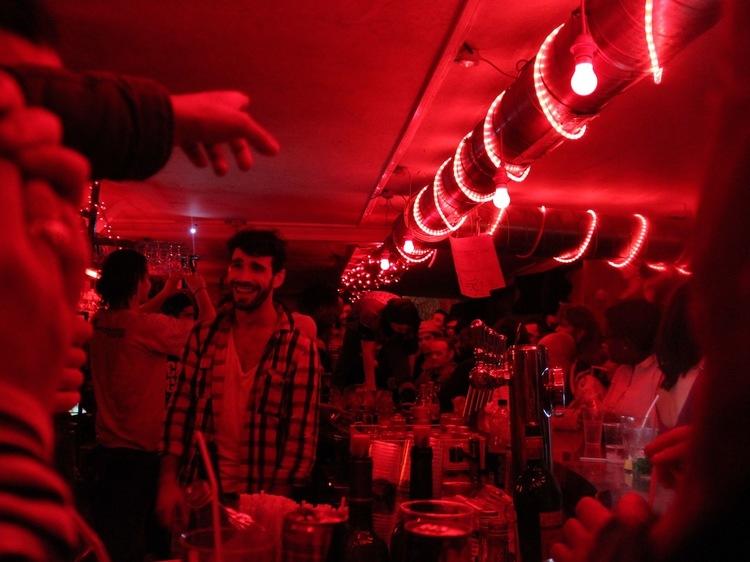
North African Immigrants in the Metropolis
It can be overlooked given all the flashiness that envelops the French capital today, but the fact is Paris has always been a city of immigrants. Nearly a fifth of the greater Paris region today is made up of immigrants — that is, people born as foreigners on foreign soil, according to INSEE — a figure that is double the share in metropolitan France as a whole. While many today are increasingly moving to the banlieue — either priced out of Paris proper or attracted to the suburbs from the onset — a large share still lives in Paris, where they make up about 20 percent of the total population.
Today’s political obsessions notwithstanding, this is not a new phenomenon. The French capital and its eastern neighborhoods in particular have long been home to foreigners seeking economic opportunities for themselves and their families. What’s changed, above all, is where they come from. For much of the 20th century, immigrant workers hailed from eastern or southern Europe: Poland and Italy in the first few decades, then Spain and Portugal. Most today can point to roots in the Maghreb or sub-Saharan Africa, countries that were once holdings of France’s colonial empire.
Think of Paris today as a palimpsest. Some of the page may be torn. Certain sections may be downright missing. What you do see has been rewritten by generations multiple times over — in different scripts and in different languages. Belleville is far from the only passage worthy of attention, but what’s remarkable is how closely today’s version resembles previous versions of the text. In many respects, Belleville is still a working-class neighborhood and it’s still an immigrant neighborhood.
The heritage of this North African immigration is still very much visible today. There are a few kosher butchers, right around the metro station. Many of the area’s cafés and restaurants are run by Kabyles, like the Becheur family at Le Zorba. Just up the Rue de Belleville sits Aux Folies, another Kabyle-managed institution known for its giant, sprawling terrace, four or five rows of seats deep. Much smaller cafés dot the neighborhood.
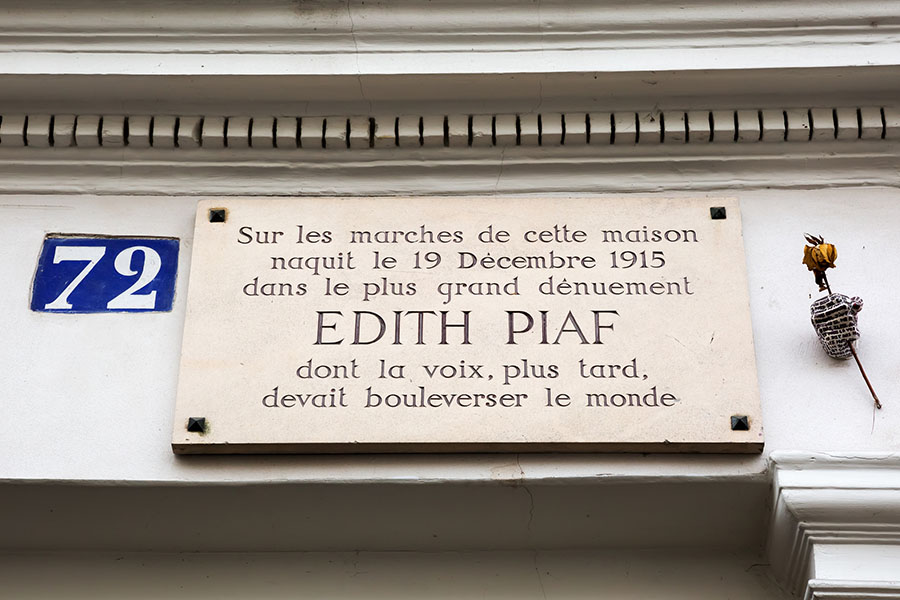
A Moroccan Sociologist
At another bar and neighborhood institution, up the hill on the Rue de Belleville and not far from the plaque that commemorates the home the singer Edith Piaf grew up in in the 1920s, I met up for coffee with Mohammed Ouaddane. The 59-year-old was wearing a black leather jacket with blue jeans, sporting a graying beard and dreadlocks. A sociologist by training, born in Morocco, Ouaddane is also a longtime community activist with a particular focus on the history of immigration. He adores the neighborhood and has lived here since 1997, but told me there’s something very painful going on as well, whatever you choose to call it.
“Yes, there are working-class people here. Yes, there is social housing. But Belleville no longer belongs to the working class,” Ouaddane said. “The landscape is being redrawn with a new socioeconomic border.”
Ouaddane works a lot with young people, organizing after-school events for at-risk youth in the neighborhood. He said the younger generation is feeling the effects of the housing boom. In addition to the very real material gap that exists between their families and some of the newer residents, many have internalized a deep sense of inferiority.
“Can the kids playing soccer in the park sit down and have a lemonade at the bobo café that opened in front of their place?”
The vague, overworked word he used, bobo, derived from bourgeois-bohème, was employed almost exclusively in jest, as a form of derision.
He continued, “No. There’s a nameless violence taking place and signifying to people that the working class doesn’t have its place here and that it doesn’t have any power.”
“It’s even worse because a lot of these young kids can get caught up in the parallel drug trade,” Ouaddane went on, speaking calmly though his voice got louder.
“They’re the little soldiers providing the artificial products for the people who come and set up comfortably on the terraces.”
I’ve witnessed this scene countless times on my own: white twenty-somethings buying low-quality hashish — what the French call shit — just in front of one of the public housing projects, where gaggles of Black and brown teens in tracksuits wait to be summoned.
“And when I say ‘kids,’ they could be 40 years old,” Ouaddane said. “These people have missed out on school, they’ve missed out on jobs and at 40 or 45, they’re up there standing up, waiting around. Then you have the bobo who shows up. Maybe he says ‘hi’ and maybe he’s friendly, it can all be very cordial but the [systemic] violence there is profound.”
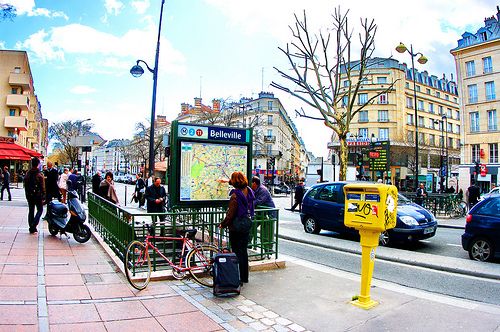
Exclusion at Home
From a purely economic point of view, the changes in the neighborhood have produced winners and losers — people who, by chance, have come out on the right side of the housing boom; and others who’ve been caught on the wrong side. The cruelty of the draw can be found across the northeast of Paris, but for an especially staggering example, one needs only to walk a couple minutes north of the Belleville metro station on the Boulevard de la Villette, past the headquarters of one of the country’s two largest labor confederations, past the sex workers, past a couple of cafés.
On the left is a small street that serves as a gateway to the micro-neighborhood of Sainte-Marthe. There are bike lines. The storefronts are painted in different colors — teal, sky blue, light pink, yellow — and the buildings are all relatively short for Paris, no more than four stories high. If it feels like its own village, cut off from the rest of the city.
“There’s also a form of exclusion that comes from telling yourself, ‘Oh no, that’s not for me,’” said Farida Rouibi, a 53-year-old documentary filmmaker. “Subjectively, you think that it’s not accessible and you tell yourself, ‘I’m not going in there.’ I’m sorry, but this is insidious.
“Some people think the kebab places are ugly or, you know, the places with pizza for five euros, with those ugly neon signs,” she continued. “But I’m one of the people who thinks, the day we don’t have those, it’s over!”
One especially clear sign of how much things had changed came during the first Covid lockdown, in the spring of 2020. With restrictions barring people from moving beyond a one-kilometer radius from their homes, Farida and others thought it might be nice to meet up in the streets’ interconnected courtyards. That is, until she realized that the gates are now locked and the various courtyards are separated from one another. “There used to not be barriers and now there are barriers,” she said. “It’s very concrete.”
In the meantime, she’s hoping to be able to get a haircut in the neighborhood.
“I sent an email to the hair salon, saying I live in the neighborhood but I don’t have the means to pay 60 to 80 euros a haircut,” Farida said. “I work part-time and I earn 1,800 euros a month. Would you give me a discount of 35 to 40 euros so that I can come down and take advantage of a service on my street?”
She has not heard back yet.
Despite those frustrations, Farida said she constantly rebuffs those who tell her she should sell her small thirty-seven-square-meter apartment, now valued at around €360,000. The influx of cash would be nice, but then what? Her friends and her job are in the city.
“People say, ‘Oh you can leave Paris.’ But I don’t want to leave Paris! Why would I want to leave Paris?”
Exclusive excerpt by special arrangement with the author and Saqi Books, from Paris Isn’t Dead Yet: Surviving Gentrification in the City of Light (2024) by Cole Stangler.



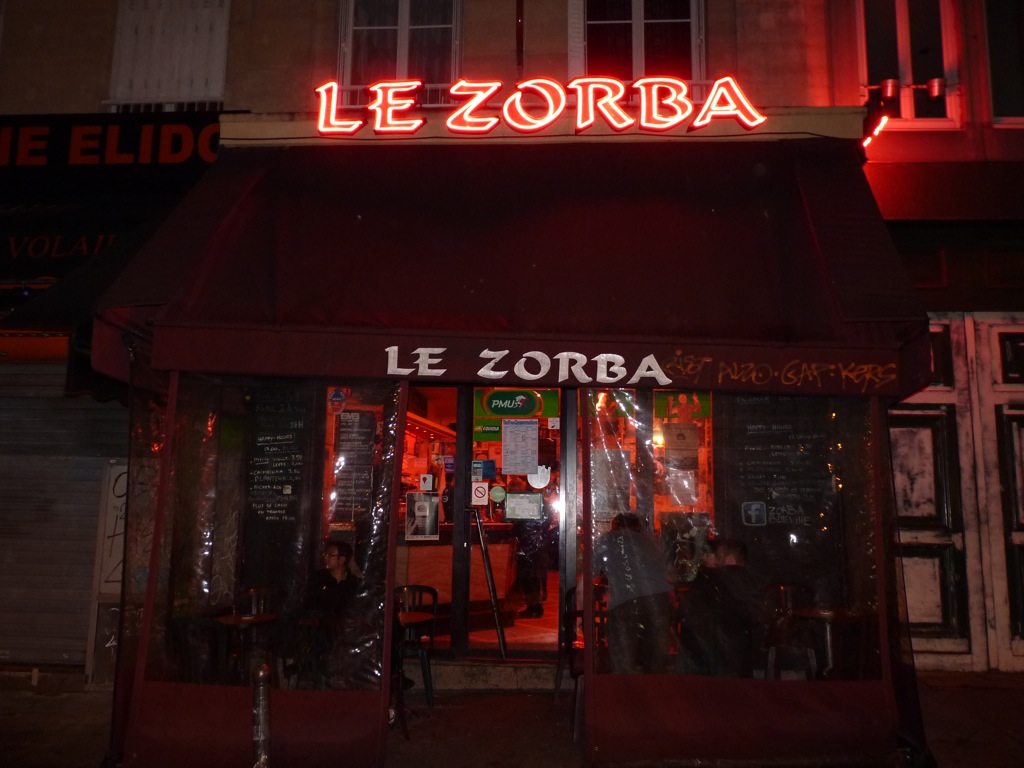
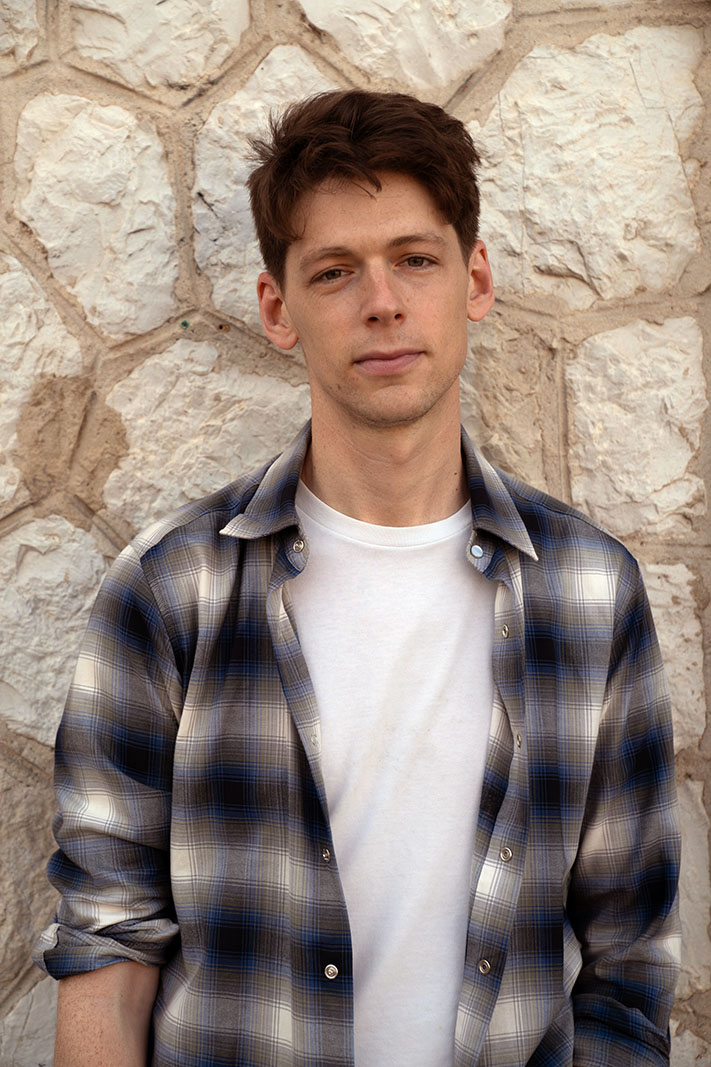
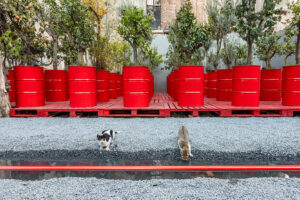
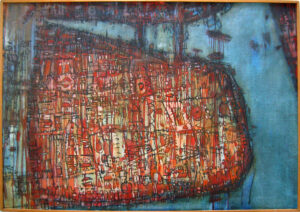
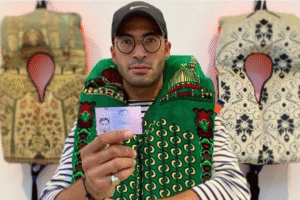
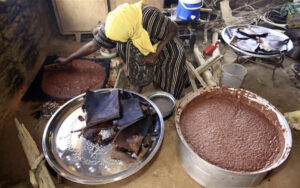
![Ali Cherri’s show at Marseille’s [mac] Is Watching You](https://themarkaz.org/wp-content/uploads/2025/09/Ali-Cherri-22Les-Veilleurs22-at-the-mac-Musee-dart-contemporain-de-Marseille-photo-Gregoire-Edouard-Ville-de-Marseille-300x200.jpg)
